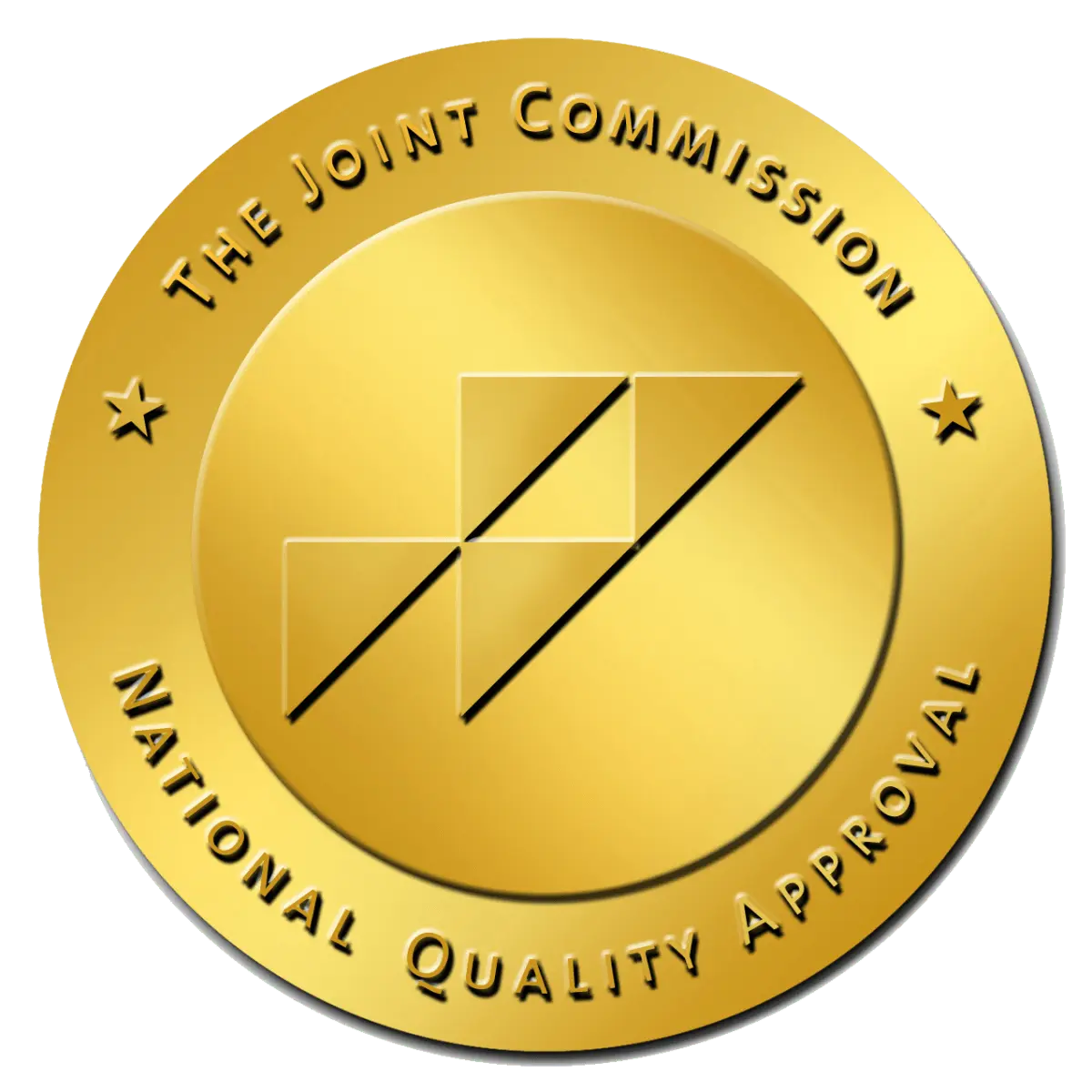Fentanyl Withdrawal - Detox & Timeline
Written by: Michelle Beaupre, PhD, LCSW | Reviewed by: Christian Small, MD
Fentanyl withdrawal can be a daunting and overwhelming process, but understanding what to expect can help ease some of the anxiety associated with it. Fentanyl, a synthetic opioid, is up to 100 times more potent than morphine, making it a major contributor to the opioid crisis. According to the Centers for Disease Control and Prevention (CDC), synthetic opioids, including fentanyl, overdose deaths increased by 30% in 2019-2020. These stark statistics highlight the critical need for effective fentanyl addiction treatment. At Villa Oasis, we provide a comprehensive, luxury care environment to support individuals through every step of their recovery journey, from detox to sober living.
The withdrawal timeline for fentanyl typically begins within 6 to 24 hours after the last dose and can last up to 10 days, with symptoms peaking around 1 to 3 days. Early symptoms may include anxiety, muscle aches, and sweating, while peak symptoms can involve severe pain, nausea, and intense cravings. Our medically supervised detox program ensures that withdrawal symptoms are managed safely and effectively. Understanding fentanyl statistics can shed light on the widespread impact of fentanyl use and the urgent need for effective treatment solutions. Villa Oasis offers personalized treatment plans, holistic therapies, and continuous psychological support, creating a nurturing environment that addresses both the physical and emotional challenges of fentanyl withdrawal. By providing a structured and supportive setting, Villa Oasis helps individuals achieve lasting recovery and regain control of their lives.

Understanding Fentanyl and Its Effects
Fentanyl is a powerful synthetic opioid used medically to treat severe pain, particularly in cancer patients. It is approximately 50 to 100 times more potent than morphine, making it extremely effective for pain management but also highly addictive. According to the report on Fentanyl Overdoses in Los Angeles County, the proportion of all opioid overdose deaths involving fentanyl increased from 19% in 2016 to 92% in 2022. This alarming statistic underscores the high risk associated with fentanyl, especially when misused or combined with other substances. Due to its potency, even a small miscalculated dose can lead to fatal respiratory depression. Understanding the effects and risks of fentanyl is crucial for both medical professionals and individuals who may encounter this drug.
The Importance of Professional Detox
Detoxing from fentanyl without professional assistance can be extremely dangerous and is often unsuccessful due to the severity of withdrawal symptoms. According to studies, more than 90% of individuals attempting detox without professional help relapse within the first few months. This statistic highlights the critical need for professional detox programs. At Villa Oasis, our luxury detox program provides a safe and supportive environment where individuals can undergo detox under medical supervision.
Medically supervised detoxification, also known as withdrawal management, involves the process of safely removing opioids from the body while managing withdrawal symptoms to ensure the individual’s comfort and safety. Our team of experienced professionals is dedicated to managing these symptoms effectively and providing medications to make the process safer and more comfortable. Villa Oasis offers personalized treatment plans, holistic therapies, and continuous psychological support, creating a nurturing environment that addresses both the physical and emotional challenges of fentanyl withdrawal. This is particularly crucial given the rising concerns over substances like blue fentanyl. By providing structured care and a comprehensive support system, Villa Oasis helps individuals achieve lasting recovery and regain control of their lives.
Fentanyl Withdrawal Timeline
The fentanyl withdrawal timeline can vary depending on several factors, including the duration and severity of use, the presence of other substances in the system, and the individual’s overall health. Generally, fentanyl withdrawal can be divided into three stages: early, peak, and late withdrawal.
Early Withdrawal (6-24 Hours After Last Dose)
Early withdrawal symptoms typically begin within 6 to 24 hours after the last dose of fentanyl. During this stage, individuals may experience:
- Anxiety and restlessness
- Muscle aches
- Sweating
- Insomnia
- Runny nose and watery eyes
- Yawning
These symptoms can be uncomfortable but are usually manageable with appropriate medical support.
Peak Withdrawal (1-3 Days After Last Dose)
The peak withdrawal stage occurs between 1 to 3 days after the last dose of fentanyl. This is often the most intense phase of withdrawal, with symptoms peaking in severity. During this period, individuals may experience:
- Severe muscle and bone pain
- Intense cravings for fentanyl
- Nausea and vomiting
- Diarrhea
- Increased heart rate and blood pressure
- Chills and goosebumps
- Depression and irritability
The peak withdrawal stage can be extremely challenging, but with the right medical care and support, individuals can safely navigate this phase.
Late Withdrawal (4-10 Days After Last Dose)
Late withdrawal symptoms typically begin to subside after 4 to 10 days. However, some symptoms may persist, including:
- Fatigue
- Mild anxiety
- Sleep disturbances
- Mood swings
- Cravings for fentanyl
During the late withdrawal stage, individuals continue to receive support to manage lingering symptoms and prevent relapse.
Comprehensive Support at Villa Oasis
At Villa Oasis, we understand that every individual’s journey to recovery is unique. Our comprehensive support system is designed to address the physical, emotional, and psychological aspects of addiction, including the growing concern of substances like fentanyl and xylazine. Our luxury care environment provides a serene and comfortable setting for individuals to focus on their recovery.
Medical Supervision and Symptom Management
Our detox program is overseen by a team of medical professionals who are experienced in managing opioid withdrawal symptoms. Medications may be prescribed to alleviate certain symptoms and reduce cravings, making the detox process more manageable. Regular monitoring ensures that any complications are promptly addressed.
Holistic Therapies
In addition to medical support, we offer a range of holistic therapies to promote overall well-being. These therapies can include:
- Yoga and meditation
- Acupuncture
- Massage therapy
- Nutritional counseling
Holistic therapies can help individuals manage stress, improve physical health, and foster a sense of calm and relaxation during the withdrawal process.
Psychological and Emotional Support
Withdrawal from fentanyl can take a significant toll on an individual’s mental and emotional health. At Villa Oasis, we provide comprehensive psychological support through individual and group therapy sessions. Our therapists are skilled in various therapeutic modalities, including cognitive-behavioral therapy (CBT) and dialectical behavior therapy (DBT), to help individuals develop healthy coping strategies and address underlying issues related to addiction.
Aftercare and Sober Living
Recovery from fentanyl addiction is an ongoing process that extends beyond detox. Our aftercare programs and sober living options provide continued support as individuals transition back to their daily lives. Sober living environments offer a structured and supportive setting where individuals can practice the skills they’ve learned in treatment while maintaining accountability.

The Villa Oasis Difference
Choosing the right detox and treatment center is crucial in the recovery journey. At Villa Oasis, we are committed to providing the highest level of care in a luxurious and comfortable environment. Our holistic approach to treatment addresses the whole person, not just the addiction, ensuring that our clients receive comprehensive and personalized care.
Luxury Accommodations
Our facility offers luxury accommodations designed to provide a peaceful and serene environment for recovery. Private rooms, gourmet meals, and a range of amenities ensure that our clients can focus on their healing without the distractions of daily life.
Experienced and Compassionate Staff
Our experienced professionals are dedicated to supporting individuals through every stage of their recovery journey. Everyone at Villa Oasis, from medical staff to therapists and support staff, is committed to providing compassionate and effective care.
Individualized Treatment Plans
We recognize that each individual’s journey to recovery is unique. Our individualized treatment plans are tailored to meet each client’s specific needs, ensuring that they receive the most effective care for their situation.
Fentanyl withdrawal can be a challenging and intense process, but with the right support and care, it is possible to overcome addiction and achieve lasting recovery. At Villa Oasis, we offer a comprehensive, luxury care environment to support individuals through every stage of their recovery journey. Our experienced team, holistic therapies, and luxurious accommodations provide the ideal setting for healing and transformation. If you or a loved one is struggling with fentanyl addiction, contact Villa Oasis today to learn more about our detox and treatment programs.

